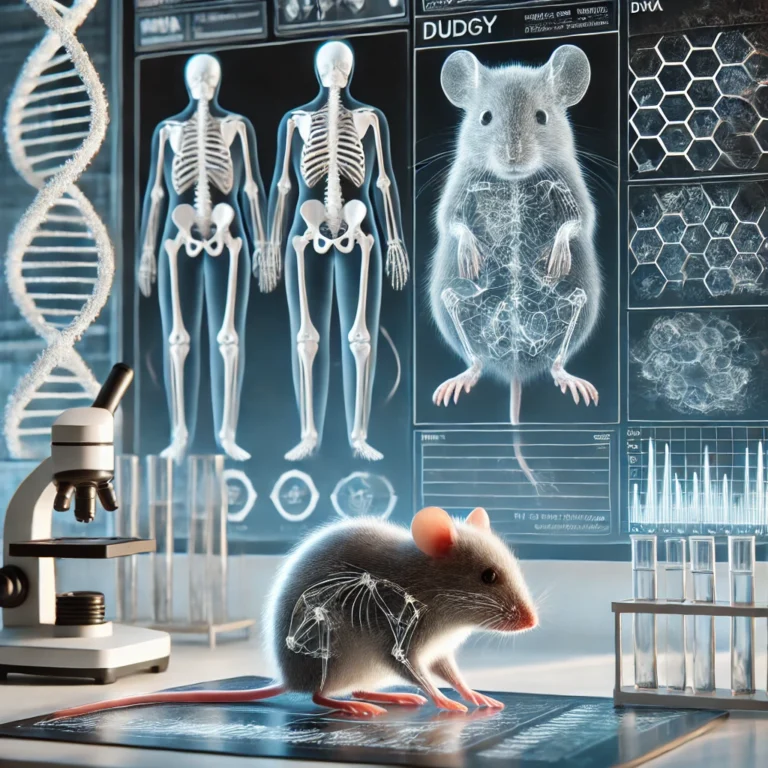Introduction:
The development of vertebrates is a highly orchestrated process, with every step regulated by intricate genetic and molecular pathways. One of the most fascinating and essential processes in vertebrate embryology is somitogenesis—the formation of somites. These segmented blocks of mesodermal tissue are the building blocks for critical structures like the vertebral column, ribs, axial musculature, and even the dermis (skin). But how do these somites form, and what genes are involved in ensuring that everything falls into place during development?
In this blog post, we will explore the mechanisms of somitogenesis, delve into the key genes involved, and explain how disruptions in these genes can lead to developmental defects. Whether you’re a student of developmental biology, an aspiring geneticist, or simply curious about how the body is formed at the molecular level, this post will give you a deep dive into this fascinating process.
What is Somitogenesis?
Somitogenesis is the process by which somites form along the anterior-posterior axis of a developing embryo. These somites are blocks of mesodermal tissue that will eventually differentiate into important structures such as vertebrae, ribs, and muscles. Somite formation is not random; it occurs in a highly temporal and spatially regulated manner, with somites forming at a regular interval—approximately one every 1.5 hours in mammals. This progression is crucial for the proper formation of the vertebrate body plan.
In mammals, the process of somitogenesis begins on embryonic day 8, when the most anterior somites start to coalesce. By embryonic day 12, the most posterior somites complete their formation. This precise timing and location of somite formation ensures that the body develops in a highly ordered fashion.
Stages of Somite Formation:
The formation of somites follows a structured series of events that can be broken down into distinct stages:
- Initial Formation of the Somite: Somite formation begins with the appearance of an epithelial sphere, a tightly packed group of cells that marks the first stage of somite formation. This epithelial sphere lasts for about 10 hours, during which the somite begins to form a distinct shape.
- Dissociation and Mesenchymal Cell Formation: After the epithelial sphere forms, the ventral portions of the somite begin to dissociate, breaking apart into mesenchymal cells. These mesenchymal cells have the ability to migrate and play an important role in the next stages of somite development.
- Formation of the Sclerotome: The mesenchymal cells migrate to form the sclerotome, which will eventually give rise to the vertebrae and ribs. The sclerotome is crucial for building the axial skeleton.
- Formation of the Dermomyotome: The remaining cells in the somite form the dermomyotome, which gives rise to the muscles of the back, the muscles of the ribs, and the dermis (the outer layer of the skin). This ensures that both the musculoskeletal system and skin develop properly.
Together, these stages of somite formation lay the groundwork for the highly organized and functional body plan of vertebrates.
Key Genes Involved in Somitogenesis:
The process of somitogenesis is governed by a variety of genes, many of which were first identified in model organisms like Drosophila (fruit flies) and mouse. These genes control the formation of somites by regulating cell differentiation, movement, and structural organization.
Through extensive research, scientists have identified several gene families that play essential roles in somitogenesis:
- Brachyury (T) Genes: The Brachyury genes are essential for the proper formation of somites. These genes regulate mesodermal differentiation and are involved in establishing the body’s anterior-posterior axis. Mutations in Brachyury genes can cause serious developmental defects, particularly affecting the vertebrae.
- Fibroblast Growth Factors (FGF): The FGF family plays a significant role in the regulation of somitogenesis by controlling cell proliferation and differentiation. These growth factors help regulate the process by which mesodermal cells differentiate into somites, and they also influence the development of the nervous system.
- Wnt Signaling Pathway: Wnt proteins are involved in a variety of developmental processes, including somitogenesis. The Wnt signaling pathway helps coordinate cell fate decisions during somite formation. Disruptions in the Wnt pathway can lead to improper somite formation and, subsequently, structural abnormalities in the vertebral column.
- BMP/TGF-Beta Family: Bone Morphogenetic Proteins (BMPs) and Transforming Growth Factor Beta (TGF-Beta) are cytokines involved in controlling cell signaling during somitogenesis. These molecules regulate the differentiation of mesodermal cells into specific types of somite precursors, including the sclerotome and dermomyotome.
- Basic Helix-Loop-Helix (bHLH) Genes: The bHLH genes are a group of transcription factors that regulate the formation of various tissues, including those derived from somites. These genes are critical for the development of muscles and other structures that arise from the dermomyotome.
Genes Identified Through Positional Cloning and Mutations:
Over the years, scientists have used positional cloning to identify genes involved in somitogenesis by looking for mutations that disrupt normal vertebral formation in mice. These mutations have led to the discovery of several key genes that regulate somite formation and patterning.
To date, over 90 mutations have been identified that impact vertebral development, with mutations in genes like Hox, Pax, and Notch being particularly important. These genes are involved in patterning the anterior-posterior axis and controlling the proper segmentation of the mesoderm.
Conclusion: The Complexity of Somitogenesis and Its Importance in Vertebrate Development
Somitogenesis is a highly regulated and essential process for the development of the vertebrate body. From the formation of somites to the differentiation of the sclerotome and dermomyotome, every step is controlled by a vast network of genes. The insights gained from studying somitogenesis have not only deepened our understanding of vertebrate development but have also provided valuable clues into developmental disorders and diseases.
For science students and budding geneticists, the study of somitogenesis is an exciting and crucial area of research. As we continue to uncover the molecular mechanisms behind somite formation, we open new doors to understanding how the body is built and how its development can go awry in disease.


